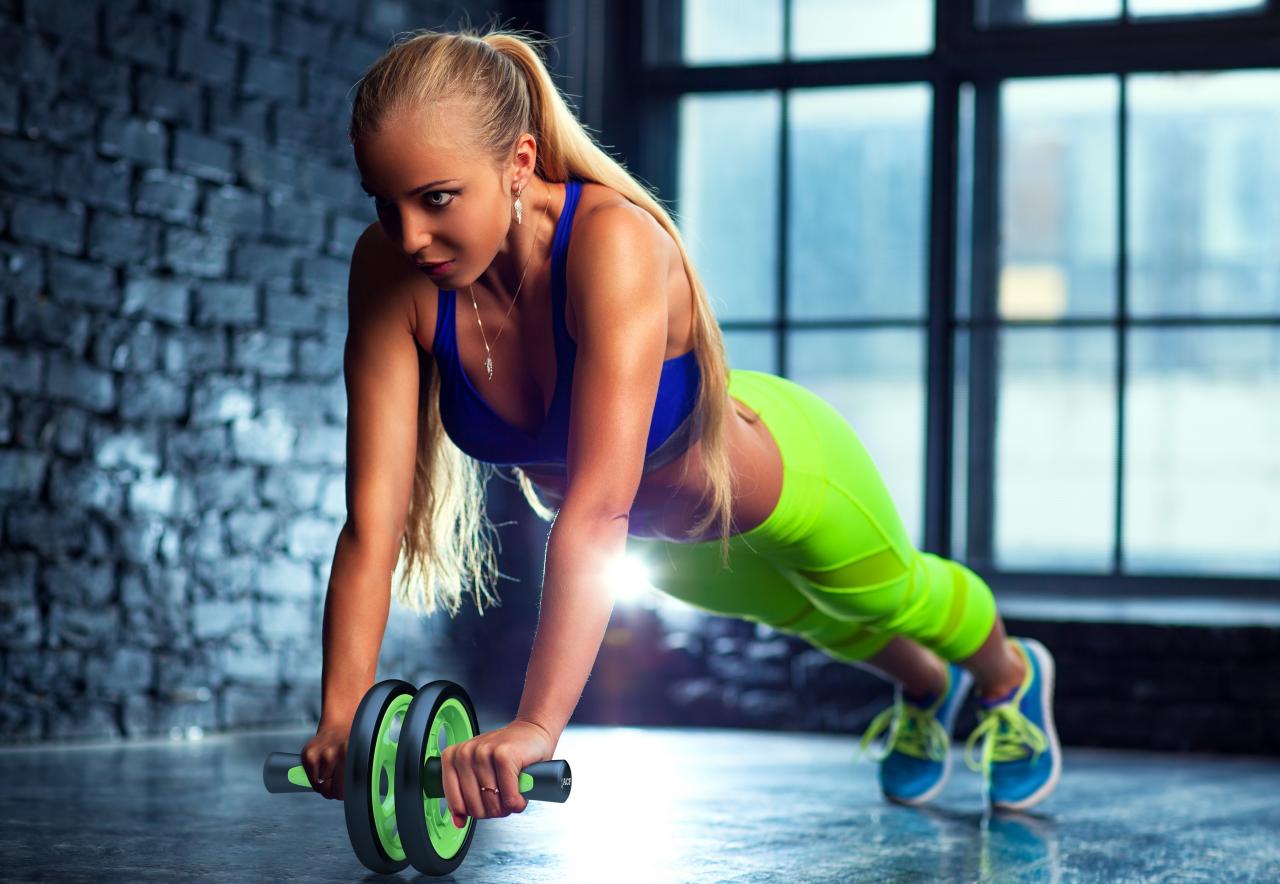Anatomy of the Shoulders

Anterior Deltoid
Medial Deltoid
Posterior Deltoid
- Sit on a bench with back support in a squat rack. Position a barbell at a height that is just above your head. Grab the barbell with a pronated grip (palms facing forward).
- Once you pick up the barbell with the correct grip width, lift the bar up over your head by locking your arms. Hold at about shoulder level and slightly in front of your head. This is your starting position.
- Lower the bar down to the shoulders slowly as you inhale.
- Lift the bar back up to the starting position as you exhale.
- Repeat for the recommended amount of repetitions.
- This exercise can also be performed standing.
Dumbbell shoulder press
- While holding a dumbbell in each hand, sit on a military press bench or utility bench that has back support. Place the dumbbells upright on top of your thighs.
- Now raise the dumbbells to shoulder height one at a time using your thighs to help propel them up into position.
- Make sure to rotate your wrists so that the palms of your hands are facing forward. This is your starting position.
- Now, exhale and push the dumbbells upward until they touch at the top.
- Then, after a brief pause at the top contracted position, slowly lower the weights back down to the starting position while inhaling.
- Repeat for the recommended amount of repetitions.
Upright barbbell row
- Grasp a barbell with an overhand grip that is slightly less than shoulder width. The bar should be resting on the top of your thighs with your arms extended and a slight bend in your elbows. Your back should also be straight. This will be your starting position.
- Now exhale and use the sides of your shoulders to lift the bar, raising your elbows up and to the side. Keep the bar close to your body as you raise it. Continue to lift the bar until it nearly touches your chin. Tip: Your elbows should drive the motion, and should always be higher than your forearms. Remember to keep your torso stationary and pause for a second at the top of the movement.
- Lower the bar back down slowly to the starting position. Inhale as you perform this portion of the movement.
- Repeat for the recommended amount of repetitions.
Variations: This exercise can also be performed using a straight bar attached to a low pulley and it can also be performed using dumbbells, though this later exercise should be reserved by people that are well familiarized with correct execution.
Dumbbell lying rear lateral raise guide
- While holding a dumbbell in each hand, lay with your chest down on a slightly inclined (around 15 degrees when measured from the floor) adjustable bench.
- Position the palms of the hands in a neutral manner (palms facing your torso) as you keep the arms extended with the elbows slightly bent. This will be your starting position.
- Now raise the arms to the side until your elbows are at shoulder height and your arms are roughly parallel to the floor as you exhale. Tip: Maintain your arms perpendicular to the torso while keeping them extended throughout the movement. Also, keep the contraction at the top for a second.
- Slowly lower the dumbbells to the starting position as you inhale.
- Repeat for the recommended amount of repetitions and then switch to the other arm.
Variations: You can perform this exercise with just one arm and also keeping the palms of the hands facing back as opposed to facing your torso.
Barbell Shrug
- Stand up straight with your feet at shoulder width as you hold a barbell with both hands in front of you using a pronated grip (palms facing the thighs). Tip: Your hands should be a little wider than shoulder width apart. You can use wrist wraps for this exercise for a better grip. This will be your starting position.
- Raise your shoulders up as far as you can go as you breathe out and hold the contraction for a second. Tip: Refrain from trying to lift the barbell by using your biceps.
- Slowly return to the starting position as you breathe in.
- Repeat for the recommended amount of repetitions.
Variations: You can also rotate your shoulders as you go up, going in a semicircular motion from front to rear. However this version is not good for people with shoulder problems. In addition, this exercise can be performed with the barbell behind the back, with dumbbells by the side, a smith machine or with a shrug machine.
Seated Side Lateral Raise
- Pick a couple of dumbbells and sit at the end of a flat bench with your feet firmly on the floor. Hold the dumbbells with your palms facing in and your arms straight down at your sides at arms’ length. This will be your starting position.
- While maintaining the torso stationary (no swinging), lift the dumbbells to your side with a slight bend on the elbow and the hands slightly tilted forward as if pouring water in a glass. Continue to go up until you arms are parallel to the floor. Exhale as you execute this movement and pause for a second at the top.
- Lower the dumbbells back down slowly to the starting position as you inhale.
- Repeat for the recommended amount of repetitions.
Variations: This exercise can also be performed standing up.

